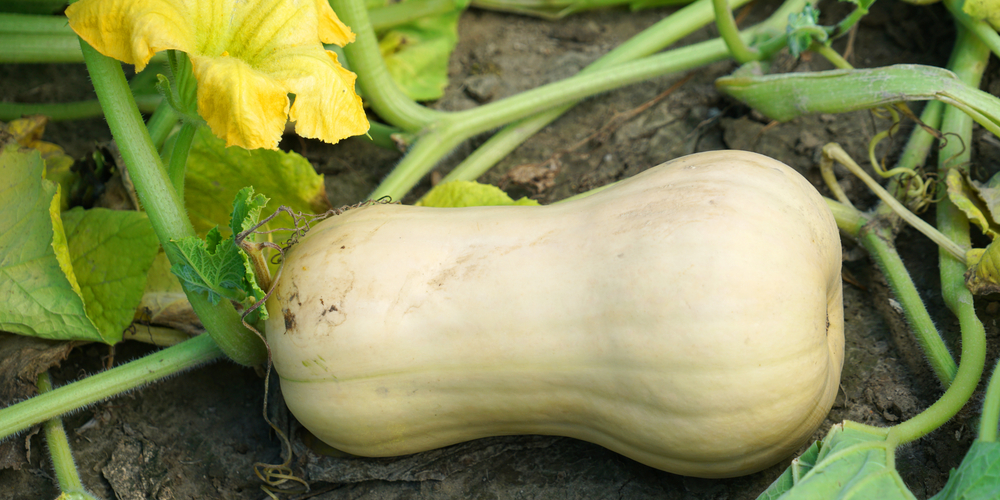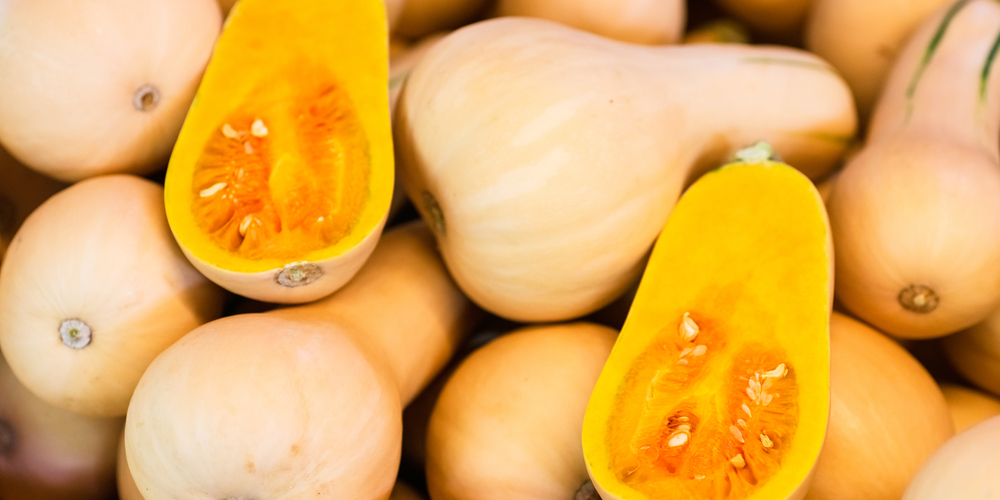Butternuts are winter squash, which means they store well in your house. But beginner growers may find it hard to know when to harvest butternut squash and how to tell they are ready to harvest. So, let’s see how long it takes for these squash to mature.
How do you know when a butternut squash is ripe? The first clue that tells us when to harvest butternut squash is color. As they mature, the fruits turn from green to a tan color.
And when they are ready to come off, you will not have to pull and twist hard. In fact, the peduncle usually breaks when you lift a mature fruit.
Most butternut squash mature in late summer, but they might develop their hard skin sooner or later. Your best bet is to look for different telltale signs that show the fruits are ready to harvest.
When To Harvest Butternut Squash And Tell They Are Ready
As a butternut squash matures, the fruit hardens its skin. For this reason, the longer you leave a single fruit on the vine, the harder its skin will get. The color starts changing during this phase. Most butternut squash turn from light green to a creamy yellow first.
Then, as they approach their final stage of ripeness, they get a dusty tan color that sometimes is so faint it looks almost white.
Most growers rely on such a simple visual clue to tell when to harvest butternut squash and other members of the Cucurbitaceae family. But if they are unsure about how ripe the fruits are, they will proceed to do a fingernail test.
The butternut squash’s hard skin has only one job to do. That is, to protect the pulp long-term against any adversity. Of course, you need the fruit to develop hard skin to store it properly. Otherwise, the butternut squash will go soft and mushy, causing mold to appear. So, you can think of the fingernail test as a shelf-life check.
How To Perform A Fingernail Test
- Pick up a butternut squash that might be a good candidate for a fingernail test—do not harvest it yet!
- Press your thumbnail against the upper part of the fruit. Let your nail turn white if pressing it in pushes the blood from underneath the thumbnail. But you do not have to give it all you got.
- Inspect the mark left on your thumbnail.
The closer you get to the stem, the softer the skin should be in unripe fruit.
The fingernail test will let you know when to harvest butternut squash because you will not be able to press your fingernail into a ripe fruit’s skin. If your thumbnail breaks the fruit’s skin, the fruit has failed the test and is not ready. But do not worry, you have not caused irreparable damage, and the fruit will continue to ripe until ready.
Checking The Tendrils
Tendrils are spiral-shaped stems that help the fruit anchor to a trellis or nearby support. And you can look at them for another clue about when to harvest butternut squash fruits.
For clarity, tendrils develop as the butternut squash matures, and you might have to cut some of them if the tendrils cause the plant to become distorted. They may pull the plant over and prevent it from growing higher. So, you might have to either cut or untangle them.
As a fruit ripe, its tendrils turn brown in color. The tendrils will dry up, signaling the plant does not need them anymore because the fruit is ready to leave the mother plant.
Letting The Plant Die Back
The first time you grow butternut squash, it is ok to wait for the plant to die back. You can leave your squash on the vine until the entire plant dies. The butternut squash plant is annual, which means it produces as many fruits and seeds as possible and then dies.
Many farmers wait for their winter squash plants to die to harvest the fruits all at once. In any case, you should know that this method can be risky. In detail, you run the risk of letting the fruits develop skin spots.
When you leave the plant to die, the leaves will turn yellow and the fruit will hit the ground. This causes the excess moisture in the environment to provide the best conditions for fungal diseases to appear. So, you might have powdery mildew issues.
The gummy stem blight fungus may also infect the fruit, causing it to develop black rot.
Butternut squash skin spots are rusty-colored areas on the fruit skin caused by a fungus feeding on the outer layer of the fruit. You can still eat the fruit.
But you had better eat it as soon as you see the skin spots to prevent the fungus from spreading further and spoiling the rest of the squash. And by all means, store the infected fruits away from the other harvested squash.
3 Important Signs That Tell You When A Butternut Squash Is Ripe
- Blemishes appear. If you tend to leave the fruits hanging on the vines, check the fruits. The presence of any mark on a tan-colored fruit skin will tell you when to harvest butternut squash. As soon as you see a blemish, harvest the fruit and consume it as fast as possible. Otherwise, it will rot.
- Long and pronounced lines disappear from the squash skin. When the butternut squash is not ripe, green lines are clearly visible on the fruit body. When it is ready, a few green lines may still remain visible on the top part near the stem. But they usually do not remain visible past the first bump.
- The peduncle turns brown. When the plant is feeding the squash, the stem will be firm and green. But as the fruit starts to ripen, the vine stops providing water and nutrients. So, the peduncle becomes dry, making it easier for you to harvest the ripe fruit without exerting too much force. If you want to store them, always use pruning shears and cut the peduncle instead of breaking the stem to reduce the risk of removing the top part, which will cause the fruit to go bad sooner.
Related Article: Butternut Squash Zone 7


